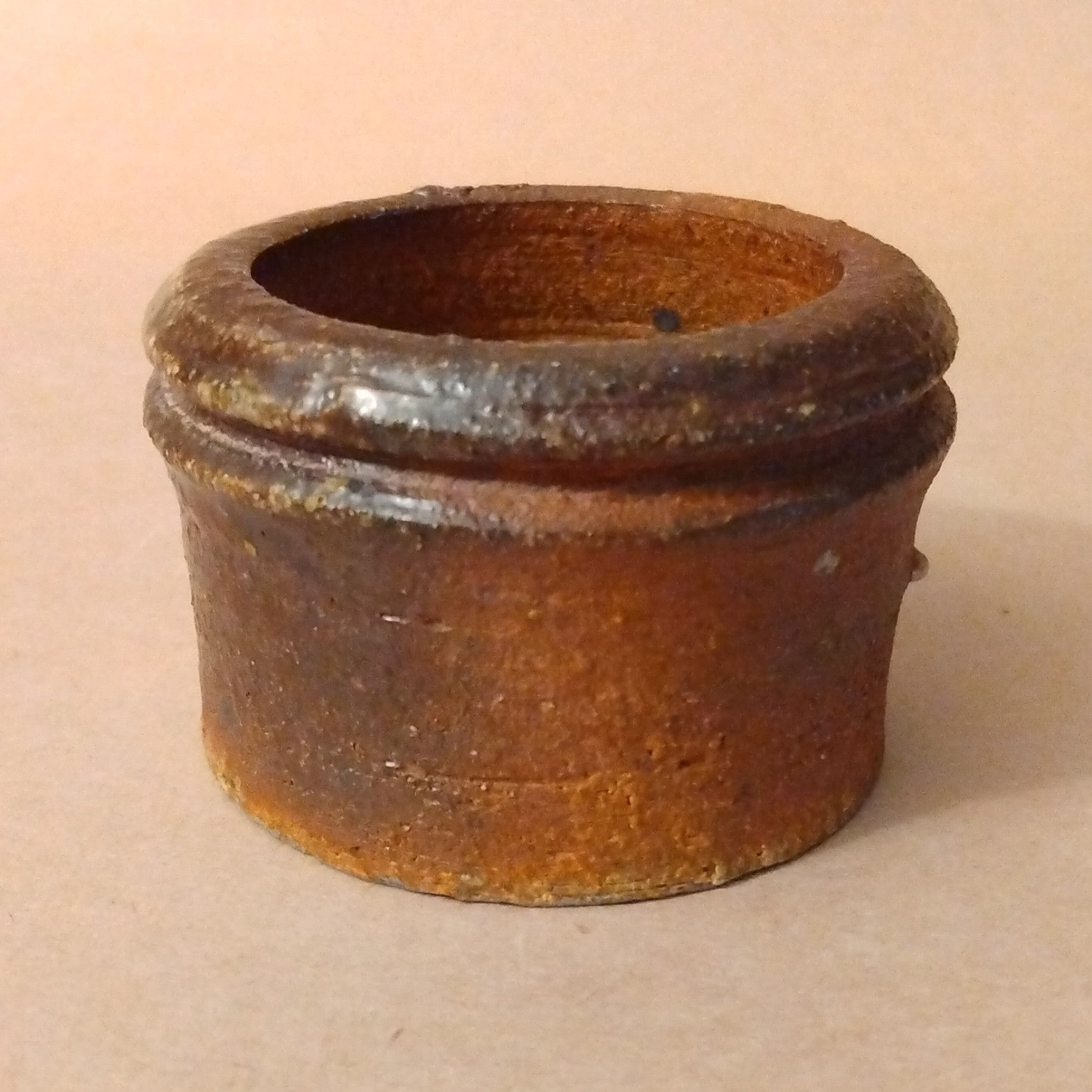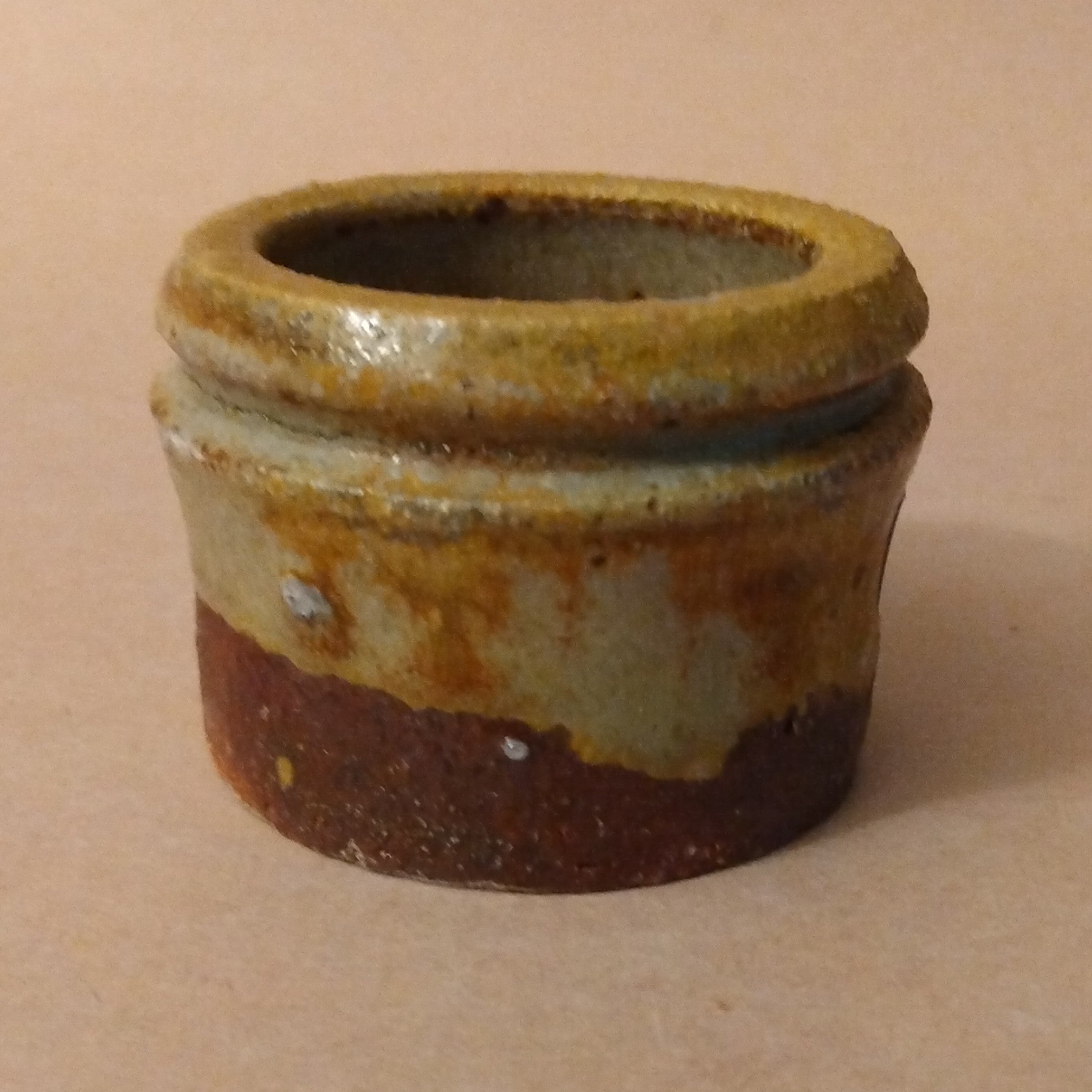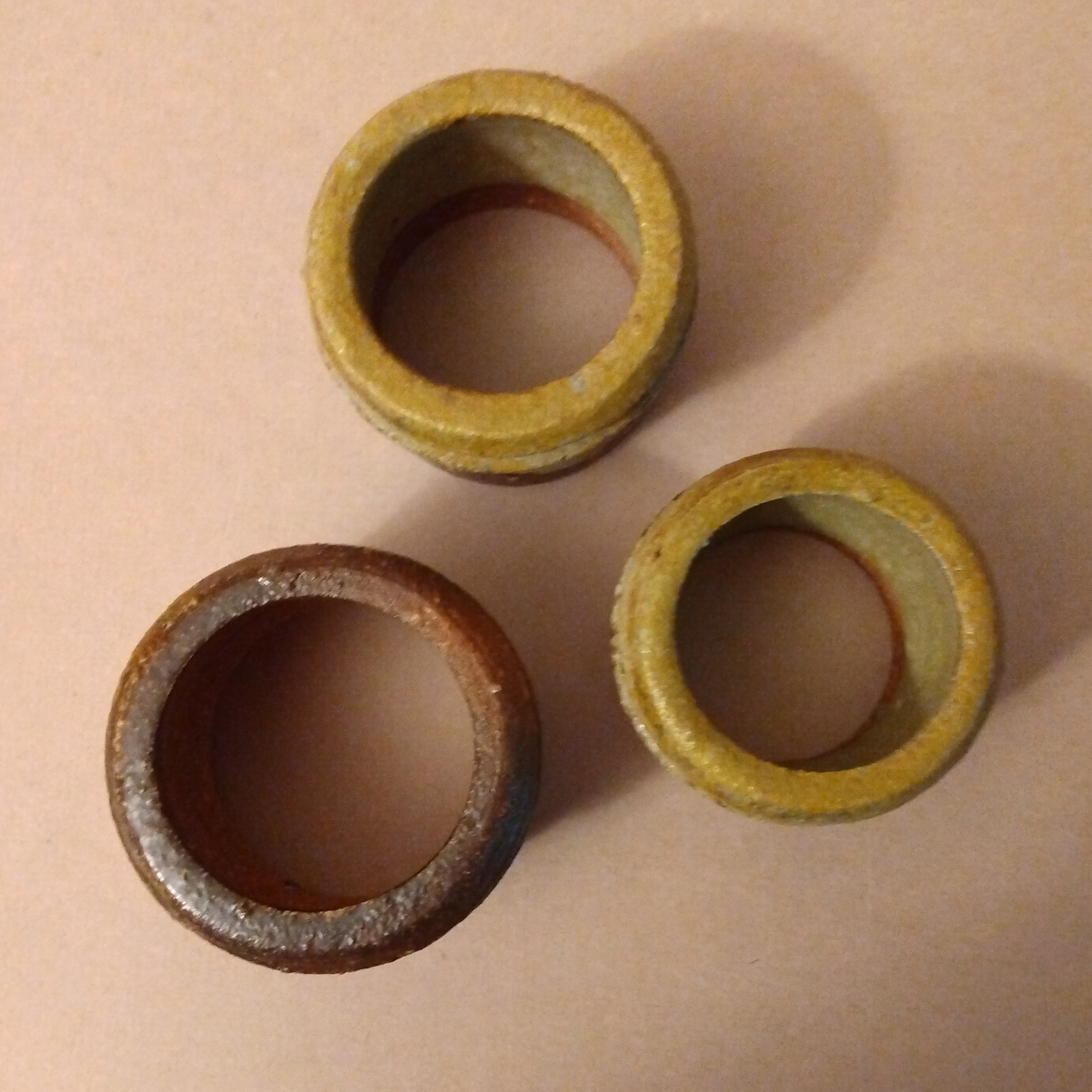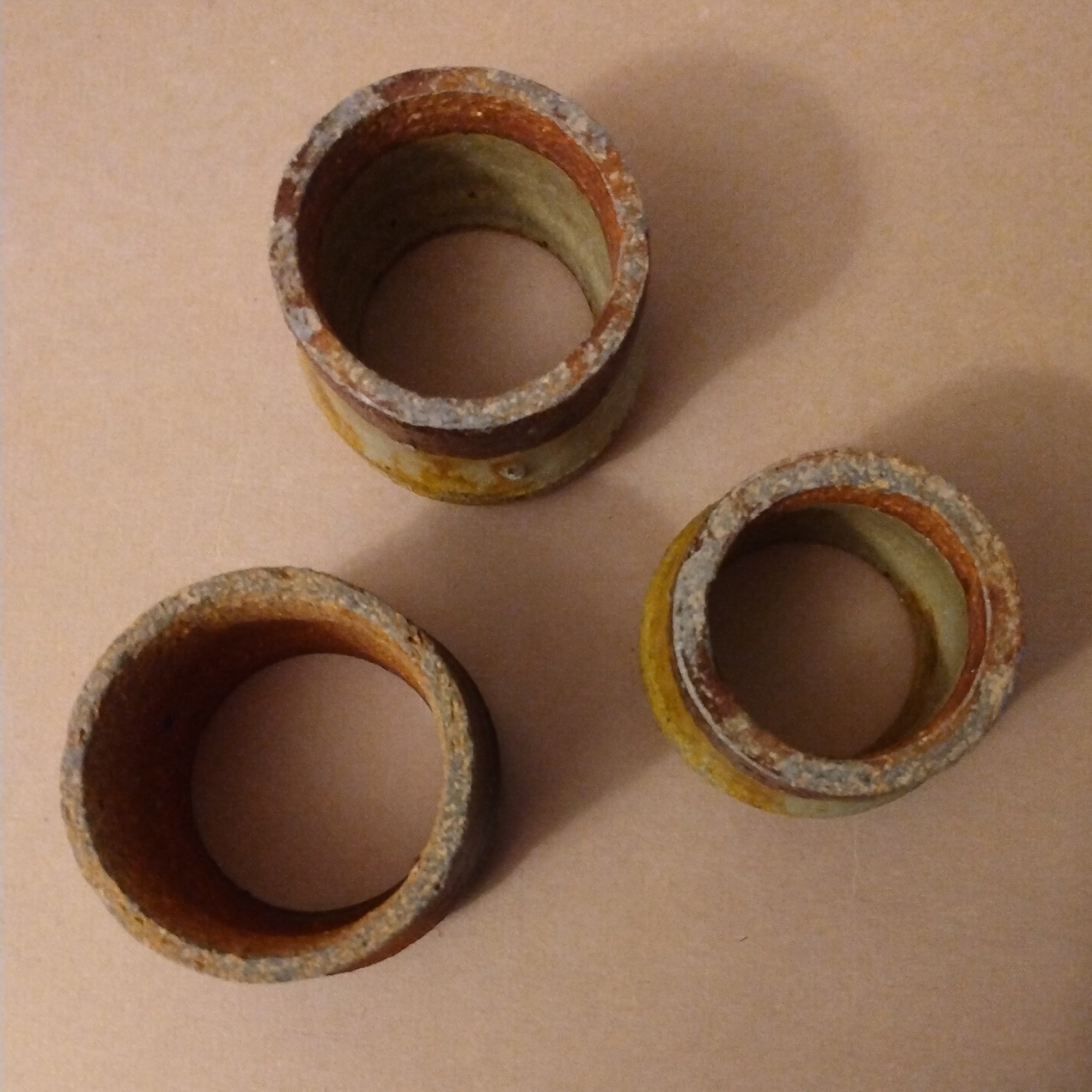Description
Wood-fired Lid rests, Futa-Oki, used to hold the lid of the hot water kettle (kama) and also to rest the bamboo water ladle (hishaku) in Chanoyu (Tea Ceremony). Futa-oki can be made out of ceramic, metal, or and other materials; but can also be made of cut bamboo. These pieces by George are meant to resemble a segment of bamboo with the node near the top. The location of the node (fushi) of the bamboo, near the top (Tenbushi, Heaven Node) or the middle (Nakabushi, Middle Node) has some significance in when the particular futa-oki is used. Tenbushi Futa-Oki are typically used in the warmer Fu-Ro Season (May through October); and the Nakabushi in the colder months (Ro Season, November through April).
Three pieces available. $8 each. Please order by Inventory Number noted on photo:
GG16.FO.9 H. 1.25"(3.25cm) X Dia. 1.875"(4.75cm). Weight 53 grams.
GG16.FO.10 H. 1.375(3.5cm) X Dia. 2"(5cm). Weight 58 grams.
GG16.FO.11 H. 1.375(3.5cm) X Dia. 2.125"(5.25cm). Weight 56 grams.
There have been several influences to George Gledhill's ceramic work. Buddhism has been a guiding force in his life for many years, and George even visits local prisons to teach the Dharma to inmates. Through pottery and Buddhism, he was exposed to Tea practitioners who complimented his work and encouraged him to produce Tea wares. Their introduction to the world of Tea Ceremony has helped to shape much of his recent work. In the past, George served in the Peace Corps in Bolivia, working with local potters and using only materials available locally. They dug all of the clay, made the bricks, built the kilns, and formulated glazes from whatever materials they could find. The only firing fuel was wood. This experience led to a great respect for the results of working with unprocessed materials, and especially for the magical qualities of wood firing a "primitive" kiln. Most of George's pots are fired in an anagama kiln (built by George many years ago) on George's farm in Payette, Idaho. They are primarily wood-fired, created using mainly raw materials available in the Pacific Northwest. The whole process is marked by a great deal of physical labor, but this is the only way to get the results he desires. Currently, George is firing a recently constructed noborigama, wood-fire climbing kiln, and we are always anxious to see the pots it produces. He continues his studies in Buddhism, and lives the life of a potter and farmer.






